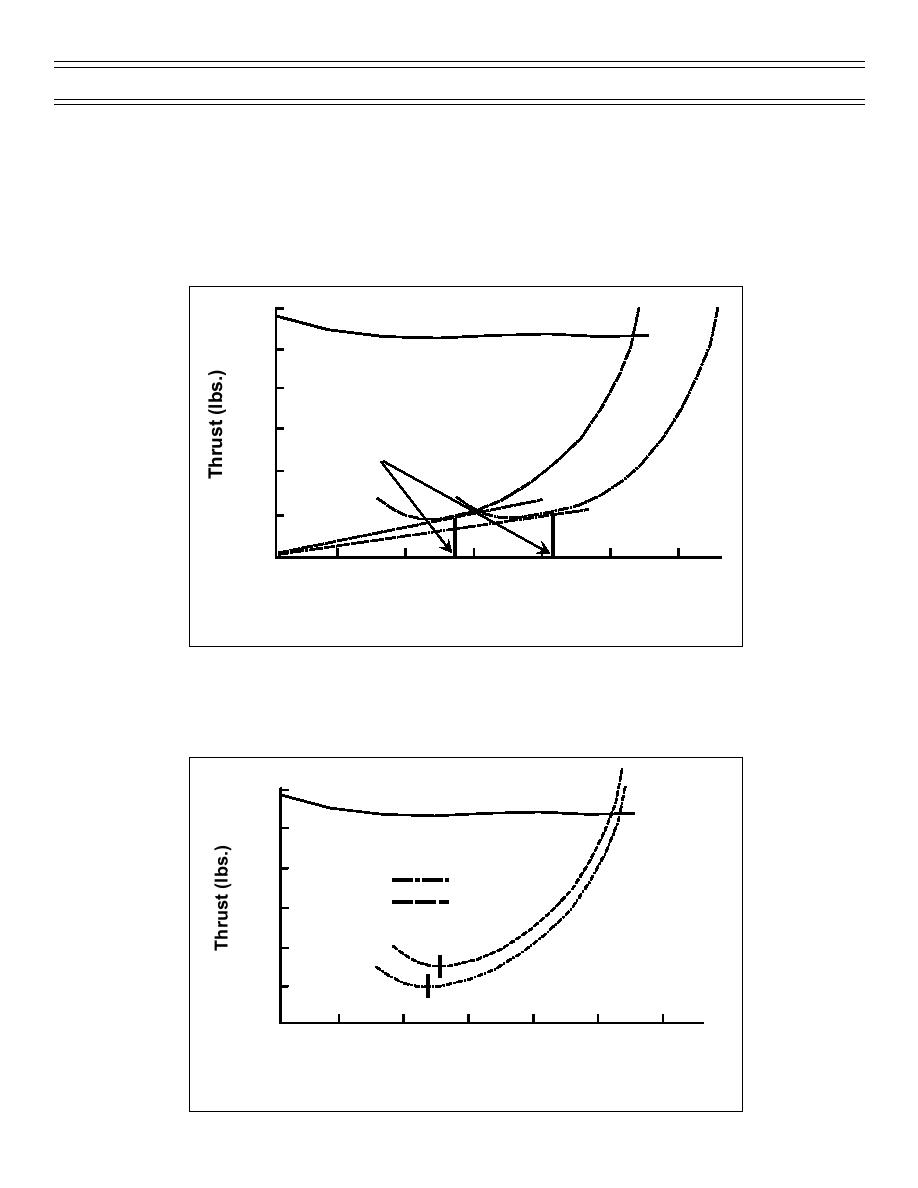
Aero Chapter 05/06 (TS) and 05 (ADV & IUT), Thrust and Thrust Curve Review
T-45 Aerodynamics Student Workbook
Altitude
The effect of altitude on the thrust-required curve is illustrated in (Figure 92). A pilot desiring to fly at
(L/D)max as altitude increases must fly at the same indicated airspeed for that weight and aircraft
configuration. However, the true airspeed of the aircraft is much higher. It can then be said, as altitude
increases, the thrust curve will shift to the right. As altitude increases, the same thrust will produce a
higher TAS due to less drag from the less dense air.
6,000
Ta at Sea Level
5,000
4,000
Tr -SL
Tr
3,000
FL 350
VMR
2,000
1,000
0
0
100
200
300
400
500
600
TRUE AIRSPEED - KNOTS
Figure 92: ALTITUDE VS THRUST
Weight
The effect of weight on the thrust-required curve is illustrated by (Figure 93). As weight increases, more
lift resulting from increased airspeed is required to support the weight of the aircraft. (L/D)max would occur
at a higher airspeed, and more thrust is required to produce the higher airspeed.
6,000
Ta at Sea Level
5,000
4,000
10,000 LBS.
12,000 LBS.
3,000
2,000
1,000
(L /D )
MAX
0
200
0
100
300
400
500
600
TRUE AIRSPEED - KNOTS
Figure 93: WEIGHT VS THRUST
(7-99) Original
Page 57



 Previous Page
Previous Page
